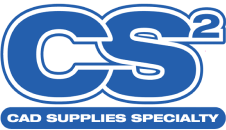Wide-format printing has evolved with advancements in ink technology, particularly with UV and Latex inks. These two types of inks are highly valued for their versatility, durability, and environmental benefits. However, they cater to different needs, with specific compatibilities across various media. This analysis delves into the strengths, applications, and media compatibility of UV and Latex inks to help you make informed decisions for your wide-format printing projects.
UV Inks: Precision and Durability
Technology Overview UV inks, also known as ultraviolet-curable inks, are composed of liquid monomers and oligomers that solidify when exposed to UV light. The UV curing process is instantaneous, resulting in a hardened, durable print. This technology enables printing on a wide array of substrates, including non-porous materials.
Advantages
- Versatility in Media Compatibility: UV inks can be used on virtually any substrate, from paper and canvas to glass, metal, wood, and even textiles. This flexibility makes them ideal for specialty applications like packaging, signage, and promotional products.
- Durability: The instant curing process creates prints that are highly resistant to scratching, fading, and chemical exposure. UV prints are also water and weatherproof, making them perfect for outdoor applications.
- High Print Quality: UV inks deliver sharp, vibrant images with excellent color consistency. The ink sits on the surface of the media, ensuring rich color saturation even on dark or colored substrates.
- Eco-Friendly: Unlike solvent inks, UV inks emit minimal volatile organic compounds (VOCs), making them a more environmentally friendly option.
Media Compatibility
- Rigid Substrates: Acrylic, foam board, PVC, aluminum, wood.
- Flexible Media: Vinyl, polypropylene, backlit films, fabrics, and banners.
- Specialty Media: Glass, ceramics, leather, and metals.
Applications
- Signage: Indoor and outdoor signs, trade show displays.
- Decor: Custom wallpaper, floor graphics, and murals.
- Packaging: Custom boxes, labels, and promotional items.
Latex Inks: Flexibility and Eco-Friendliness
Technology Overview Latex inks are water-based and use heat to evaporate the water and coalesce the latex particles, forming a durable film on the substrate. These inks are known for their flexibility, making them ideal for applications that require bending or stretching of the printed material.
Advantages
- Environmental Considerations: Latex inks are water-based and free from hazardous air pollutants (HAPs), offering a greener alternative to solvent-based inks. They also produce no harmful odors, making them suitable for indoor environments.
- Versatility: Latex inks are compatible with a wide range of media, both coated and uncoated. This versatility extends to a variety of applications, including vehicle wraps, wallpapers, and textiles.
- Durable and Flexible Prints: Latex prints are scratch-resistant and can endure high-stress conditions, such as vehicle wraps and outdoor advertising. They are also flexible, which is essential for media that require folding or stretching.
- Quick Drying and Odorless: The heat-assisted drying process of latex inks ensures prints are ready for immediate handling or lamination, speeding up production times.
Media Compatibility
- Flexible Media: Adhesive vinyl, banners, canvas, wallpaper, textiles, and films.
- Rigid Substrates: Foam boards, corrugated plastics, and light boards.
- Eco-Friendly Media: Recyclable and biodegradable substrates designed for environmentally conscious projects.
Applications
- Vehicle Wraps: Highly durable and flexible, ideal for contouring around curves and edges.
- Interior Decor: Custom wallpapers, murals, and fabric printing.
- Retail Graphics: Point-of-sale displays, window graphics, and floor decals.
- Outdoor Advertising: Billboards, building wraps, and banners.
Comparative Analysis
1. Media Compatibility
- UV Inks: Shine when printing on non-traditional substrates like metal, glass, and ceramics, offering unparalleled versatility for specialty projects. They also handle both rigid and flexible materials, making them a go-to for diverse applications.
- Latex Inks: Excel in flexible media, especially for applications that require durability and stretchability, such as vehicle wraps and textiles. They also work well on a variety of eco-friendly substrates.
2. Durability and Flexibility
- UV Inks: Known for their robust, scratch-resistant properties, UV inks are excellent for long-term outdoor applications. However, they are less flexible than latex inks, making them less suitable for media that require extensive manipulation.
- Latex Inks: Provide a balance of durability and flexibility, ideal for applications where the printed material needs to bend, stretch, or fold.
3. Environmental Impact
- UV Inks: Emit minimal VOCs and are more environmentally friendly than traditional solvent inks. However, the energy consumption for UV curing can be a drawback.
- Latex Inks: Stand out as a sustainable choice due to their water-based composition and lack of harmful emissions. They are particularly favored in settings that prioritize indoor air quality.
Conclusion
Choosing between UV and Latex inks depends on your specific printing needs. UV inks offer unparalleled versatility across a wide range of substrates and are ideal for applications requiring durability on rigid surfaces. On the other hand, Latex inks provide the flexibility and eco-friendliness needed for applications involving flexible media and indoor environments. Understanding these nuances will help you select the right ink type to optimize your wide-format printing projects.


